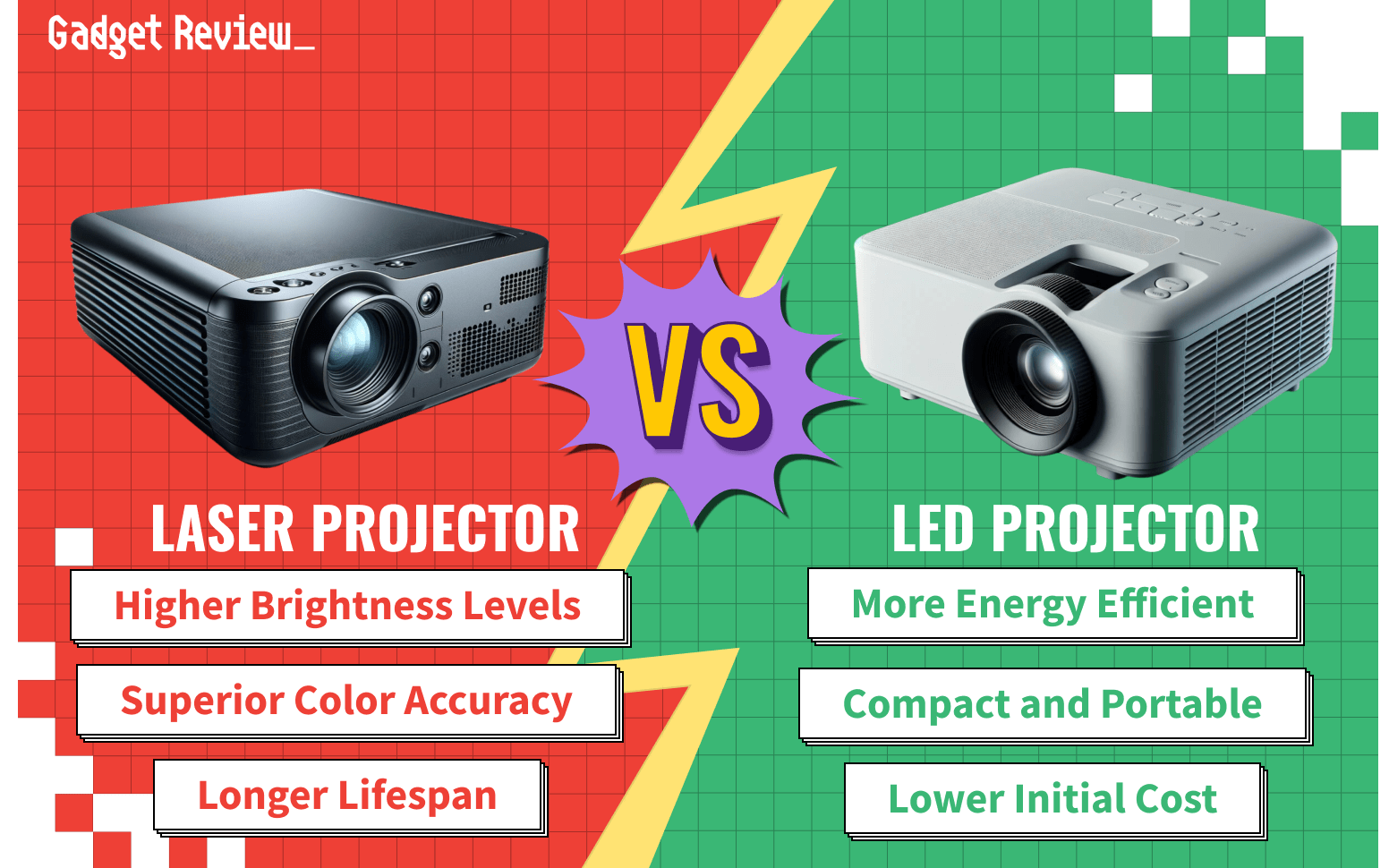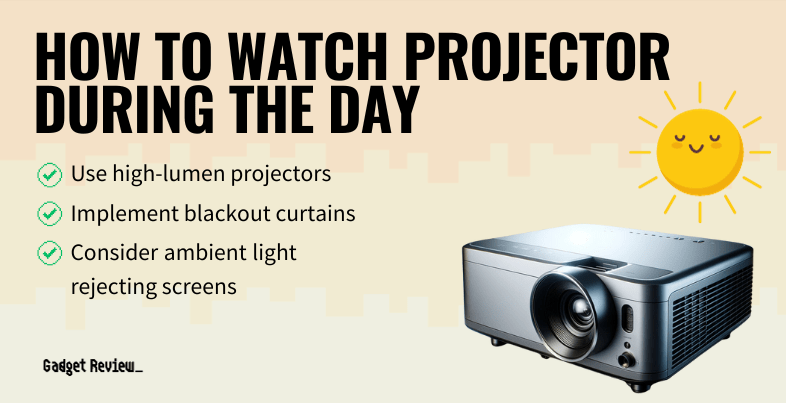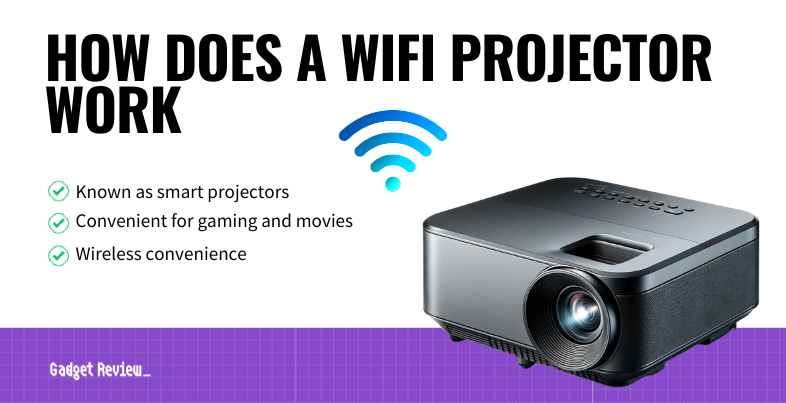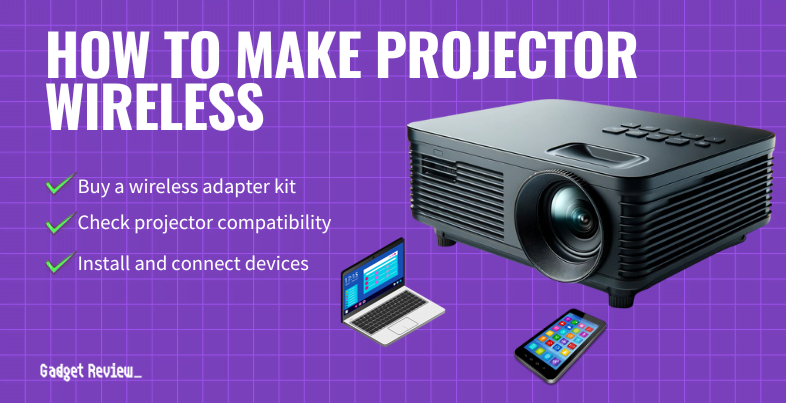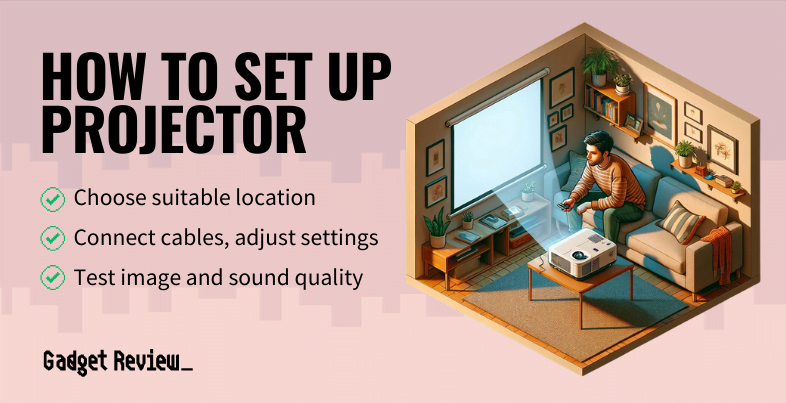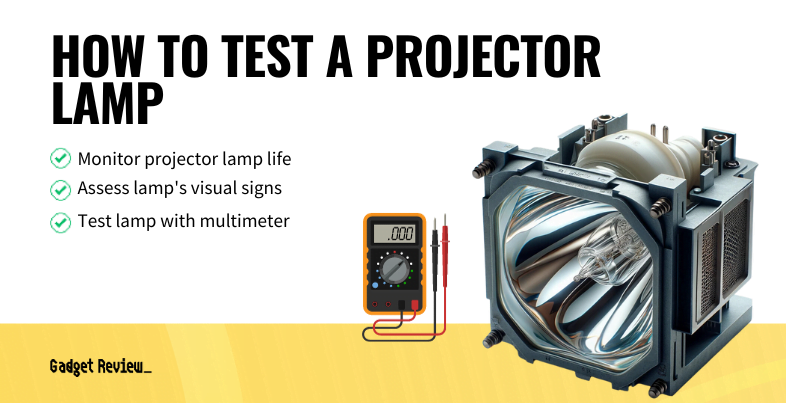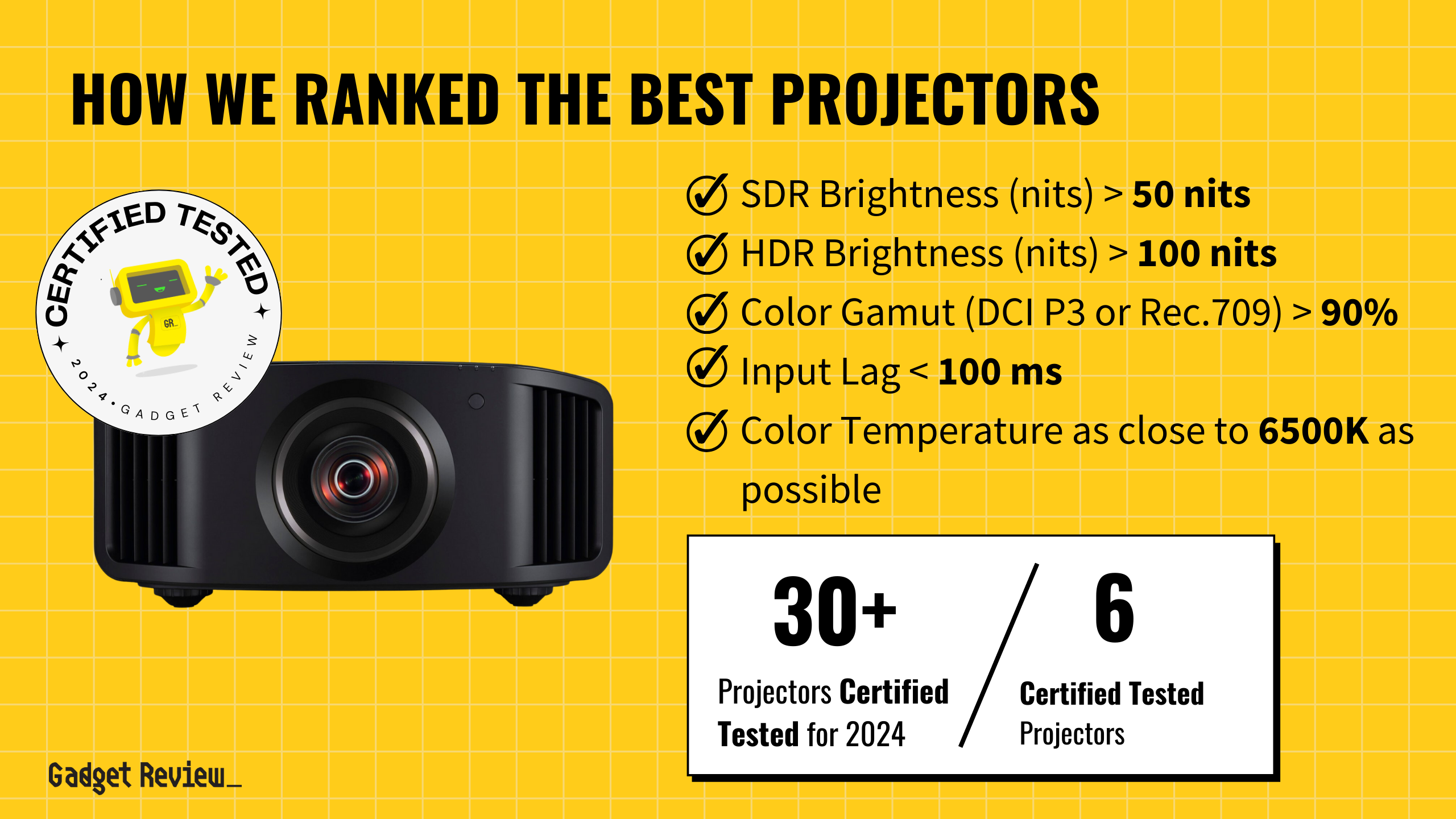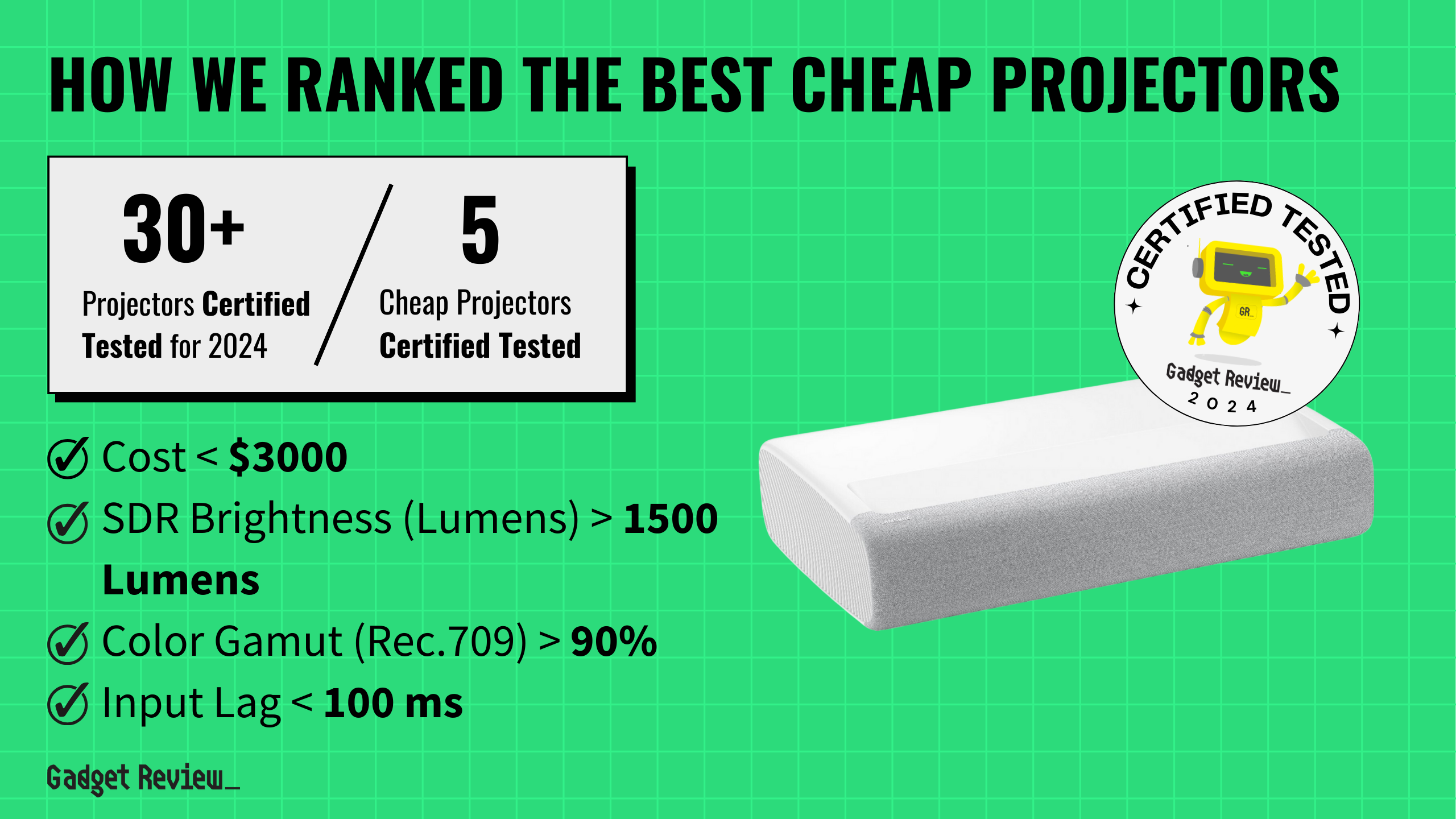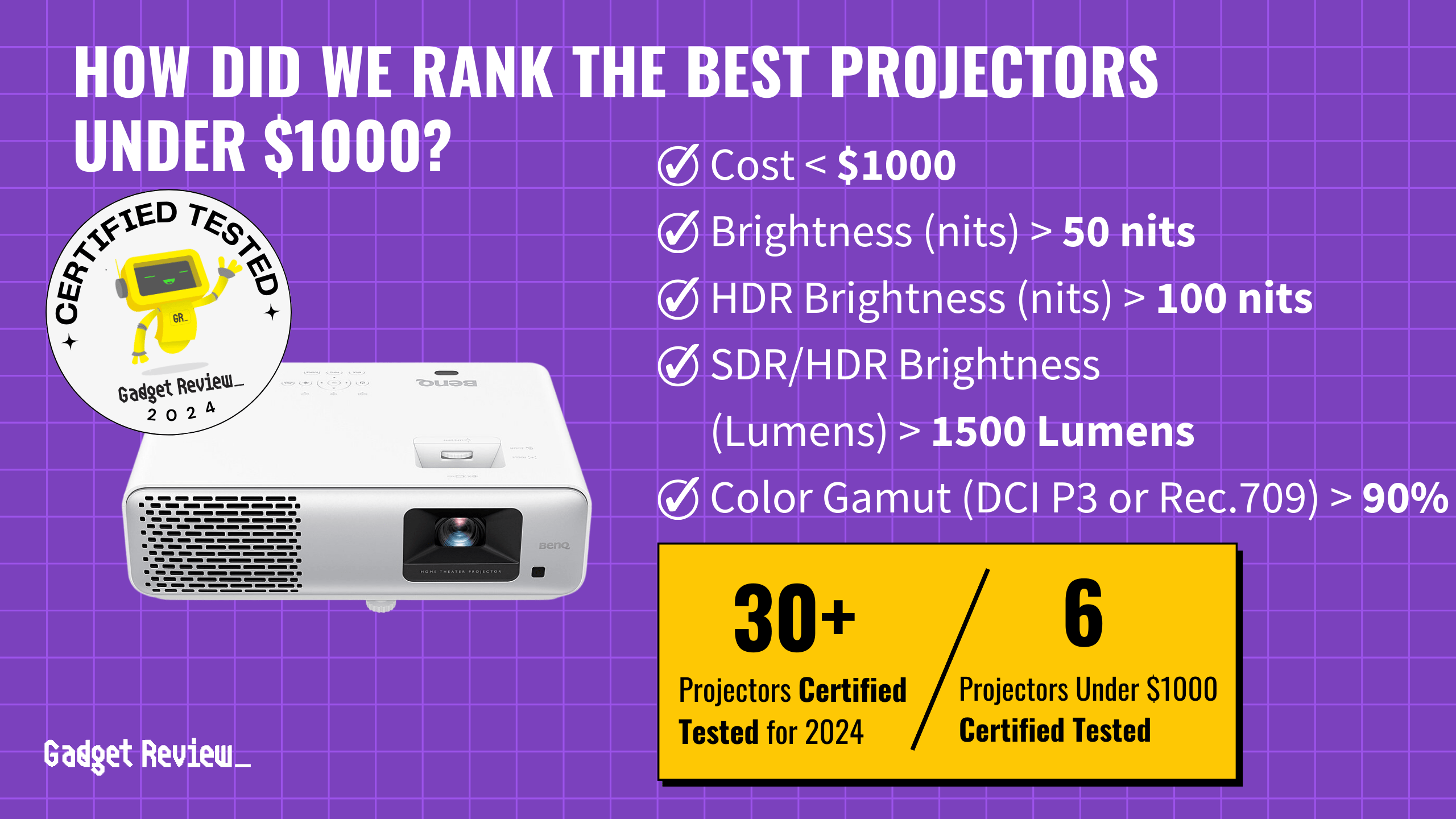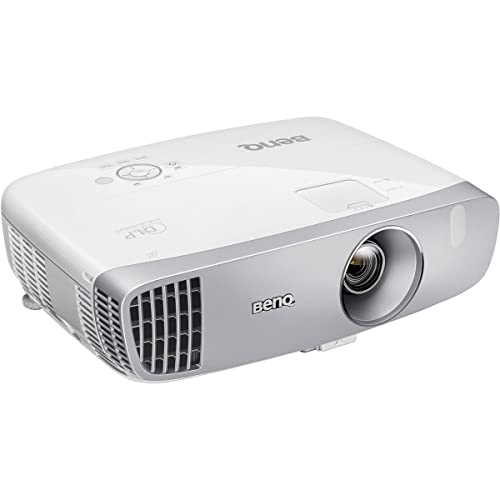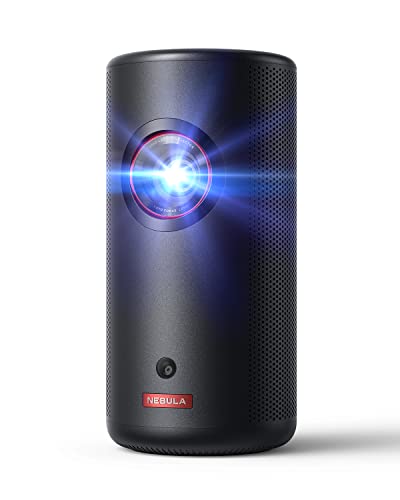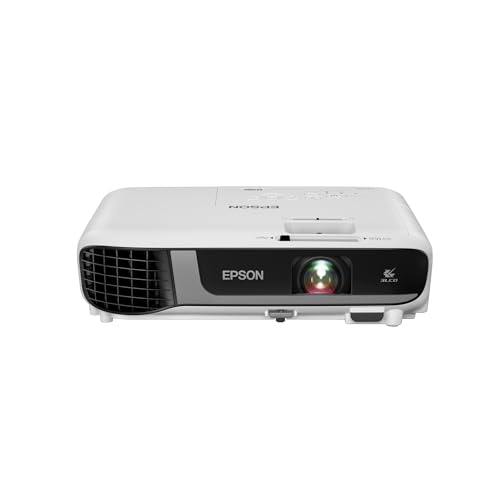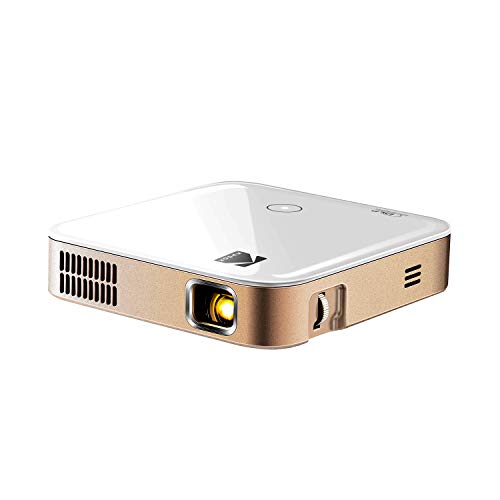Wondering about the differences between LED top-rated projectors and laser ones? Each type has its own set of benefits and drawbacks.
Key Takeaways_
- A laser projector is the better option if you want superior brightness and image quality.
- LED lights featured in projectors exist in each of the primary colors. This is the more cost-effective choice.
- Laser projectors include laser light that passes through a physical color wheel to provide higher image brightness on a projector screen or other surface.
Laser and LED Projectors Compared
As you research projector types, you’ll learn that LED and Laser projectors are popular contenders. Both are lamp-free designs, avoiding the limited lifespan and mercury content of lamp projectors. They’re more eco-friendly solutions, perfect if you’re considerate about environmental impacts.
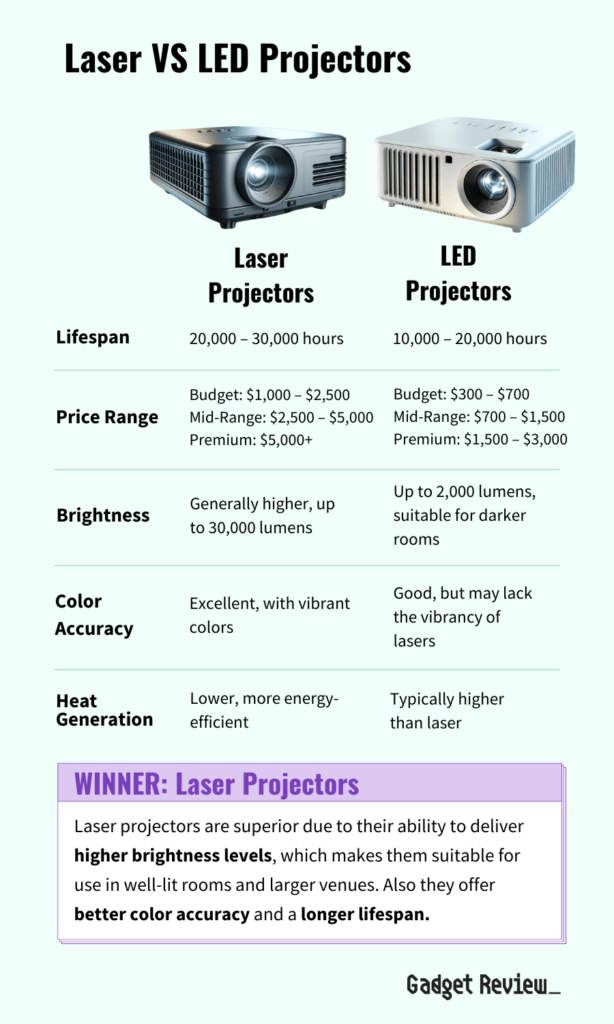
LED projectors shine in many aspects.
- They exhibit vibrant colors and consume less energy, making them cost-effective in the long run.
- But there’s a bane to this otherwise promising option: brightness. LED models struggle to match the light output of their laser counterparts. If brightness factors into your decision, laser projectors might make a more fitting choice.
warning
LED projectors do not have the same brightness, but they offer more advantages, including color impact, life span, and more.
On the flip side, laser projectors use a blue laser as their light source.
- They boast superior brightness levels and a stunning image quality, making them ideal for large-screen presentations.
- However, they tend to generate more heat, which could impact their overall lifespan.
But which is truly the “better” projector? Laser projectors. You will get incredible picture quality out of laser types that surpasses LED projectors.
For information regarding LED and DLP projectors.
What are Laser Projectors?
Let’s dive deeper into the world of laser projectors. Harnessing the power of lasers rather than traditional lamps, these projectors deliver high levels of brightness, making them ideal for use in bright rooms or outdoor settings. They’re perfect for large-scale viewing experiences like presentations, lectures, and movies, providing you with superior sharpness and image quality.
- One of the key distinguishing factors of laser projectors is their longevity.
- Traditional lamp-based projectors can’t compete when it comes to lamp life. Thanks to their primary color, blue laser light sources, these models boast a lower maintenance cost over time due to their longer lifespan.
insider tip
Laser projectors offer higher brightness, reducing the effect of ambient light.
- With energy efficiency in mind, laser projectors consume significantly less power than their LED counterparts, offering a cost-effective solution for businesses and organizations.
- Furthermore, they generate less heat, allowing for extended running times without the worry of damage caused by excessive heat output. They can be turned on and off instantly, eliminating the need for traditional cooldown periods.
- Keep in mind, the superior advantages of laser projectors come at a higher price.
- Their design presents a potential challenge if repair work is ever required. Nonetheless, taking these factors into consideration is crucial for you to choose the best projector option, tailoring it to your specific needs.
So, is a laser projector the right option for you? To answer, let’s explore LED projectors in further detail.
What are LED Projectors?
When you’re exploring projector options, LED projectors come up quite a lot. Using light-emitting diodes (LEDs) as the light source, these projectors are quite different from the traditional lamp projectors and even the laser projectors. LED projectors help in creating colorful, bright images due to its primary color light sources. Indeed, you’ll often find an ideal display even with the lights on or in rooms where you can’t control ambient light.
- Another reason you might lean towards an LED projector is the light engine disposition.
- A superior engine ensures minimal heat generation, extending your projector’s life.
- Speaking of, the lifespan of LED projectors tends to outshine traditional projectors significantly. No bulbs to change, and less maintenance overall.
- Let’s touch on the cost – while initial prices of LED projectors might be higher, you’ll find great value in the long run due to their higher lamp life and lower energy consumption. Furthermore, with various models available in the market, you have the freedom to choose one that suits your specific needs and budget.
Still, remember that each technology comes with its pros and cons. For instance, while LEDs are energy efficient, they may not offer the same image quality as laser projectors. Understanding these factors can assist you in making the best decision on whether an LED projector should be your go-to projection solution.
Image Quality and Brightness
When it comes to choosing a projector, Image Quality and Brightness are two crucial factors. The debate between laser and LED projectors typically swings in this area. While laser projectors shine in terms of high picture quality and larger image size, it can take time for them to reach maximum brightness.
These projectors are specifically designed for use with Ambient Light Rejecting(ALR) screens or special reflective materials. This setup dramatically enhances both the image quality and brightness, particularly in brightly lit rooms.
On the other hand, LED projectors offer longevity and energy efficiency, but may not match up to laser models in terms of image brightness. They utilize light-emitting diodes which output a variety of radiant colors. But remember, the image quality isn’t just dependent on the light source. Screen choice also plays a pivotal role here.
If you’r curious about the lamp type of projector, definitely research and compare laser projectors vs lamp projectors. One of the major benefits of laser and LED projection lighting is that neither technology contains mercury, unlike lamp projectors with short-lived lightbulbs.
Use-Case Recommendations
Now that you’re equipped with a solid understanding of LED and laser projectors, it’s time to figure out where you might choose one over the other. Your decision heavily depends on various factors, including brightness requirements, cost-effectiveness, lifespan, and your specific use cases.
For instance, LED projectors are great for those who rely on their projector every day. Consider an LED type for home use where you use it regularly.
- Regular users will find that these models offer better long-term value, thanks to their extended lifespan of 20,000 operational hours or more.
- Additionally, these projectors require minimal maintenance beyond periodic filter cleanings—making them a practical solution if your projector is placed in a difficult-to-reach area.
- Moreover, LED projectors’ solid-state light sources generate less heat, a critical advantage in small spaces or unique orientations. This feature is particularly beneficial in specialized settings, like art installations, museums, or environmental projections.
On the flip side, laser projectors are gaining traction, especially in the sub-6000 lumen projector market, due to decreasing prices. They’re ideal for professional use, large venues and big rooms.
- These models, similarly, have a lifespan of up to 20,000 hours and require routine lens cleaning and alignment checks.
- The image quality they offer is also impressive, with bright colors and clear visuals.
In the end, it’s all about assessing your primary needs. Thus, understanding each projector’s trade-offs will aid you in making an insightful, informed choice. Rest assured, whether you opt for an LED or a laser projector, you’ll be creating amazing visuals with these cutting-edge technologies.
Which Is The Winner?
If we’re talking about general performance and projection quality, laser projectors come out on top due to their superior picture quality.
But if image quality doesn’t matter as much as convenience and staying within a lower budget, then LED projectors are probably the more appealing choice.
It’s ultimately up to you. Assess your needs, weigh the pros and cons, and make an informed decision. It’s all about finding what suits you best.


